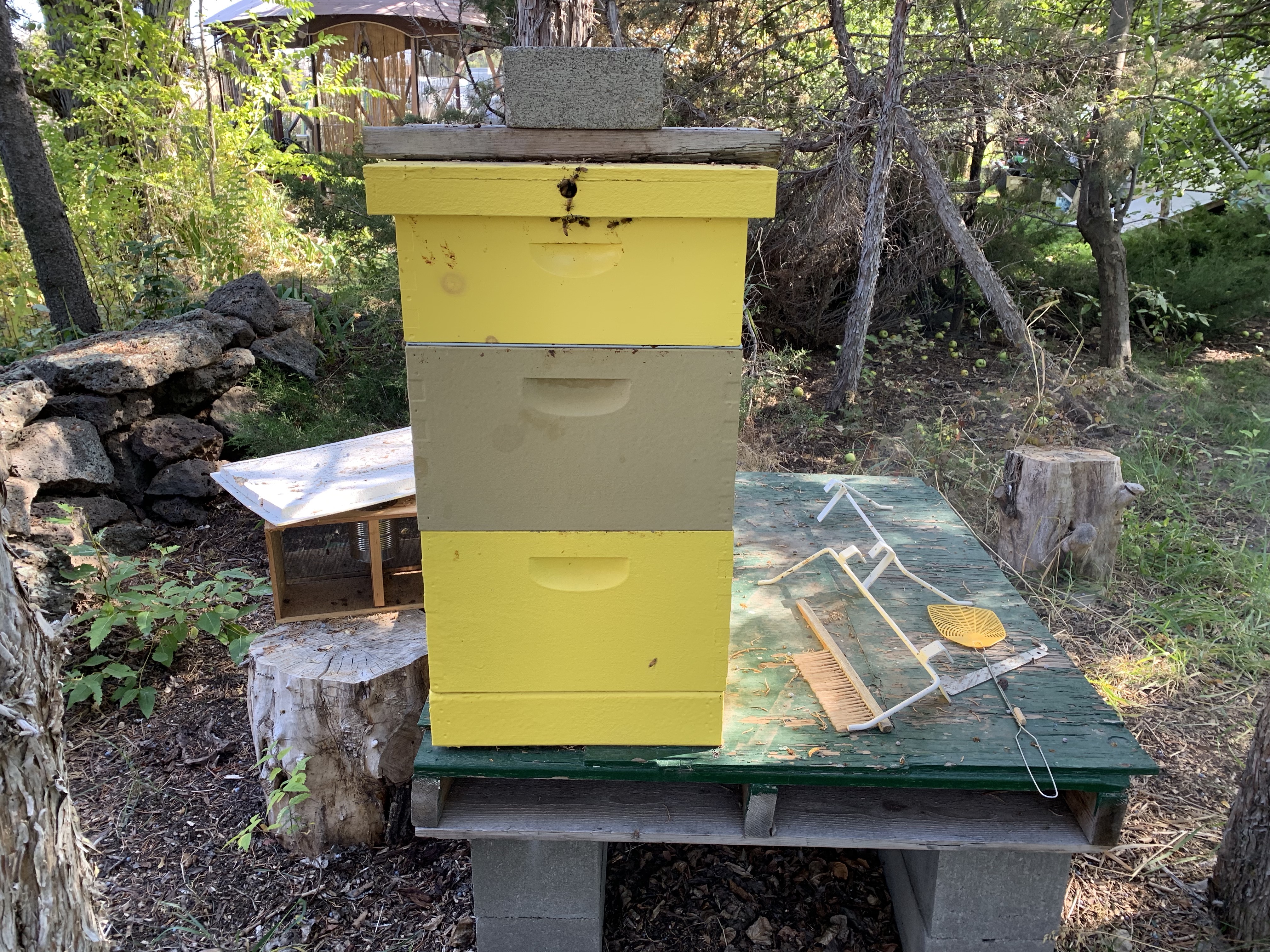I decided to make my candy board from foundationless frames instead of using one that sits on top of the hive. I’ll place them on the outside edges of the top brood box, assuming there’s room. In other words, we haven’t looked inside the hive in a month or better so we don’t actually know what’s going on in the honey super. Nothing was happening the last time we checked but that may not be the case now. But I wanted to see how in-frame candy boards worked out, so I’m making them anyway.

My husband decided to insert a piece of hardware cloth in place of the plastic foundation to add some support for the candy board. Although the picture above and those that follow show the wax paper underneath the frame, that didn’t work out well and ultimately I had to redo the candy boards inserting the wax paper between the sugar and the hardware cloth.
[wordads]
I had wanted to put sugar on both sides of the frame, but realistically, since they’ll be placed in the brood box on each edge, it doesn’t really matter if there’s sugar on both sides. So, redoing the boards actually ended up being the correct choice anyway.
I’m placing a small pollen patty in the center of each so that the bees can have some in the Spring when they’ve eaten their way through the hardened sugar. Pollen patties can be purchased pre-made or in a container to mix up on your own.

To make the candy I used five pounds of regular white sugar to 1 cup of hot water, mixing it together in a large pan. You can add a little white vinegar, but it’s optional and I didn’t have any. After mixing it together, I began pressing it onto the frame around the pollen patty.

From there, I covered the pollen patty and smoothed the sugar a bit.

I eventually added some fishing line, tying it around the frame for additional support, but as you’ll see as you read further, none of this was necessary and I ended up not using the candy board after all.
[wordads]
When we opened the hive, we saw that the girls had built crossed comb instead of following the frames. I didn’t have any foundation-style honey super frames so I could only put foundation-less in there when we added the honey super in August. I normally alternate the frames to encourage straight comb alignment, but that didn’t happen this time. Instead, we found that they built the comb across the frames instead of within them. The pictures are below:
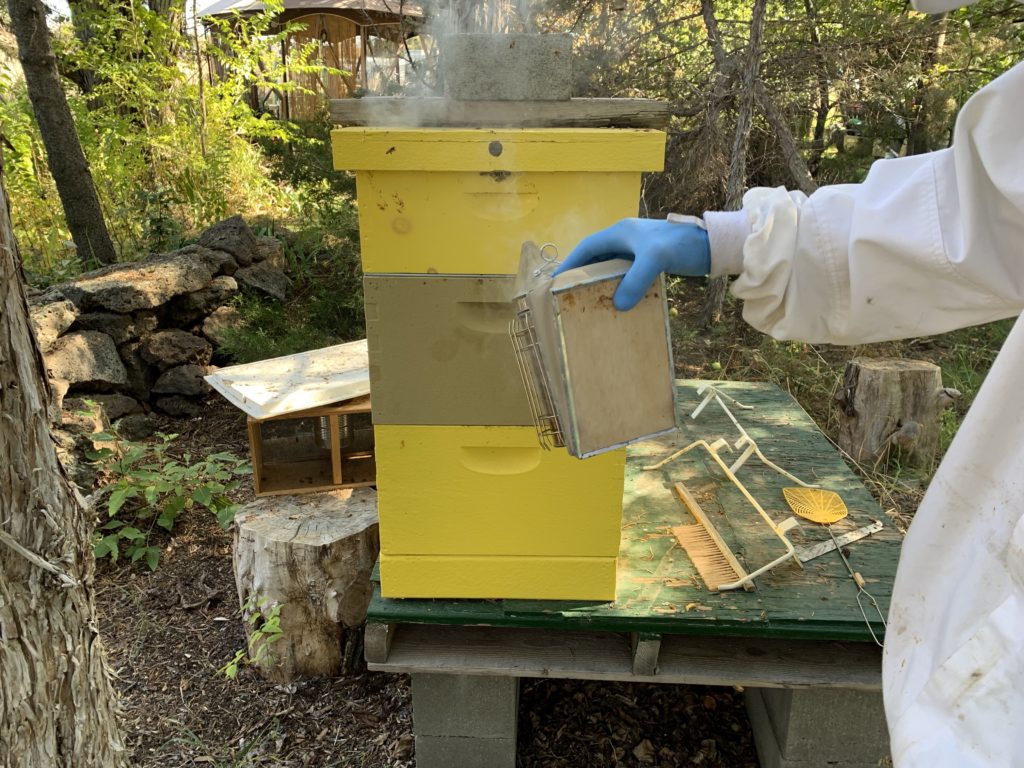
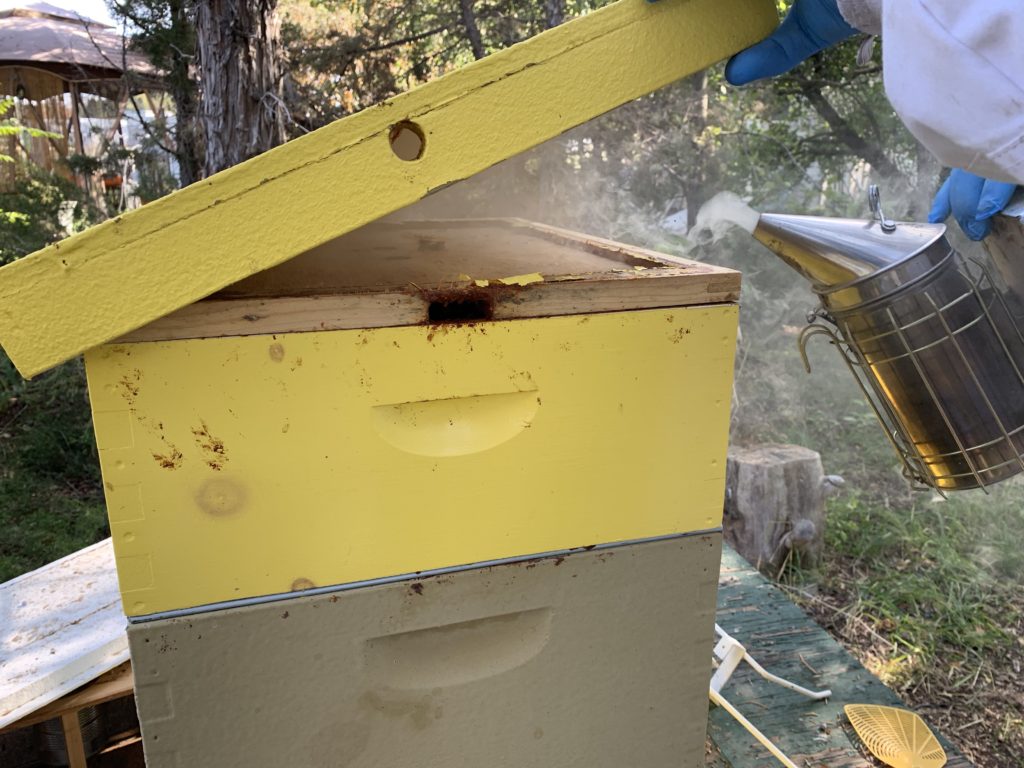
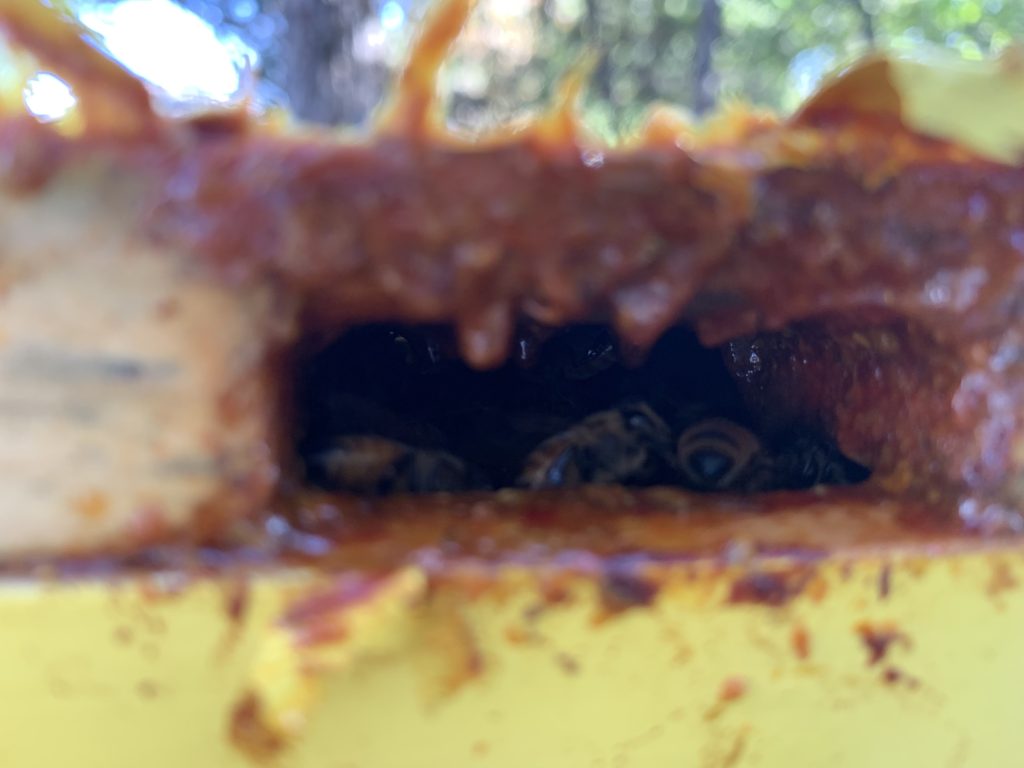
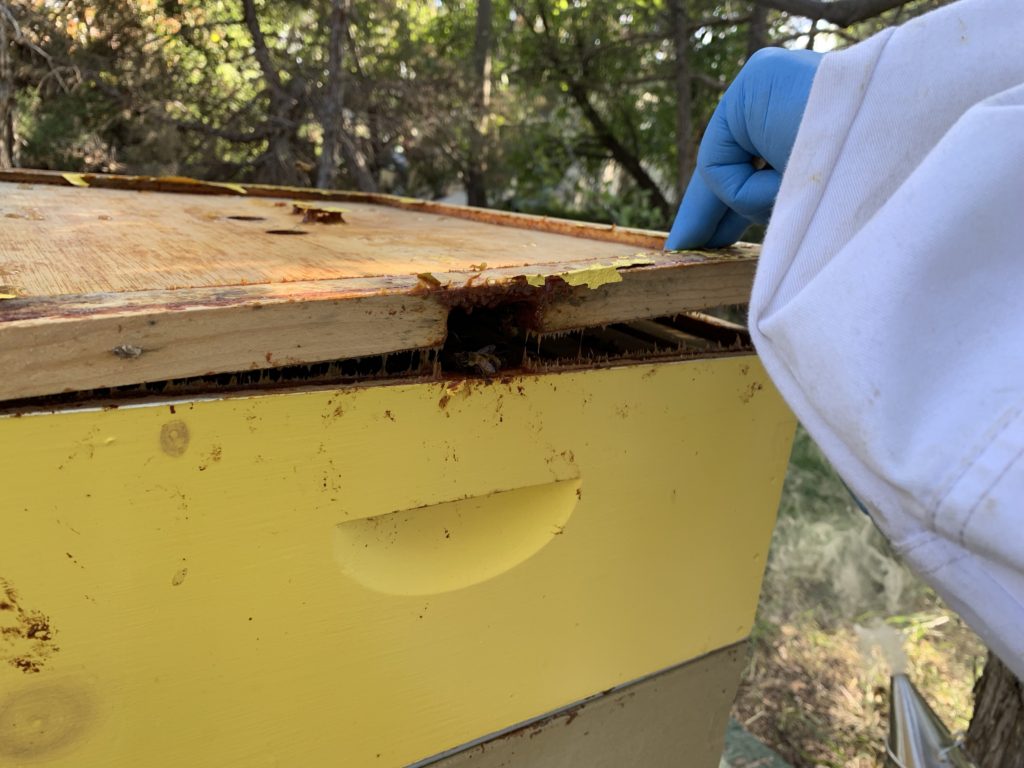
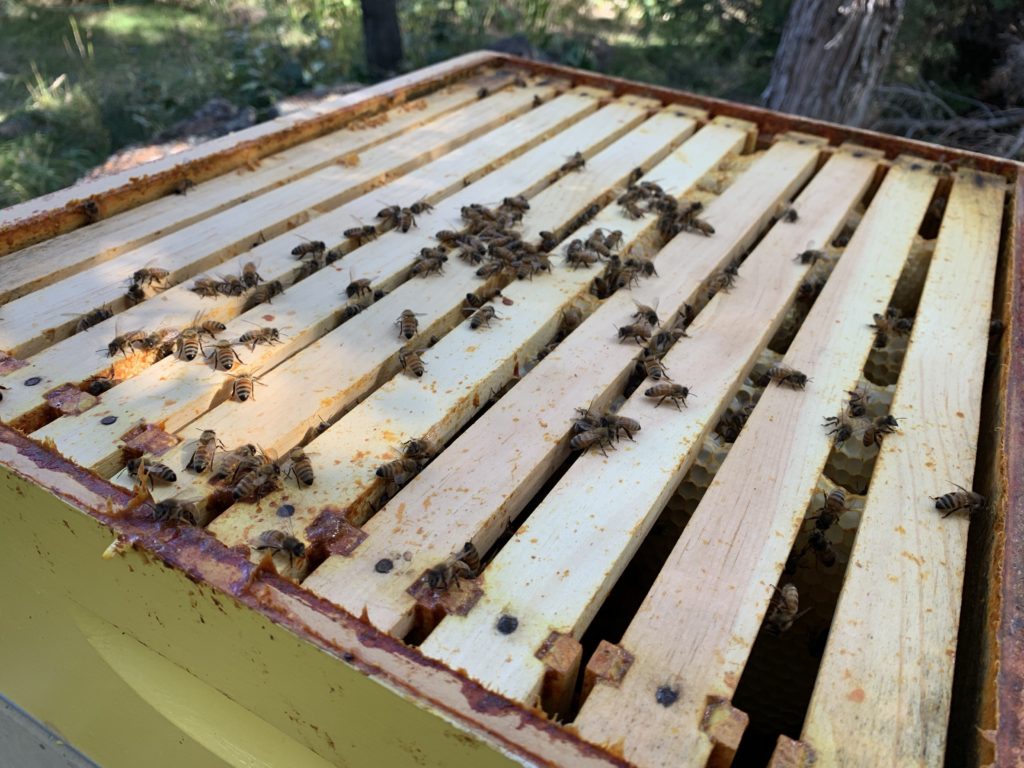
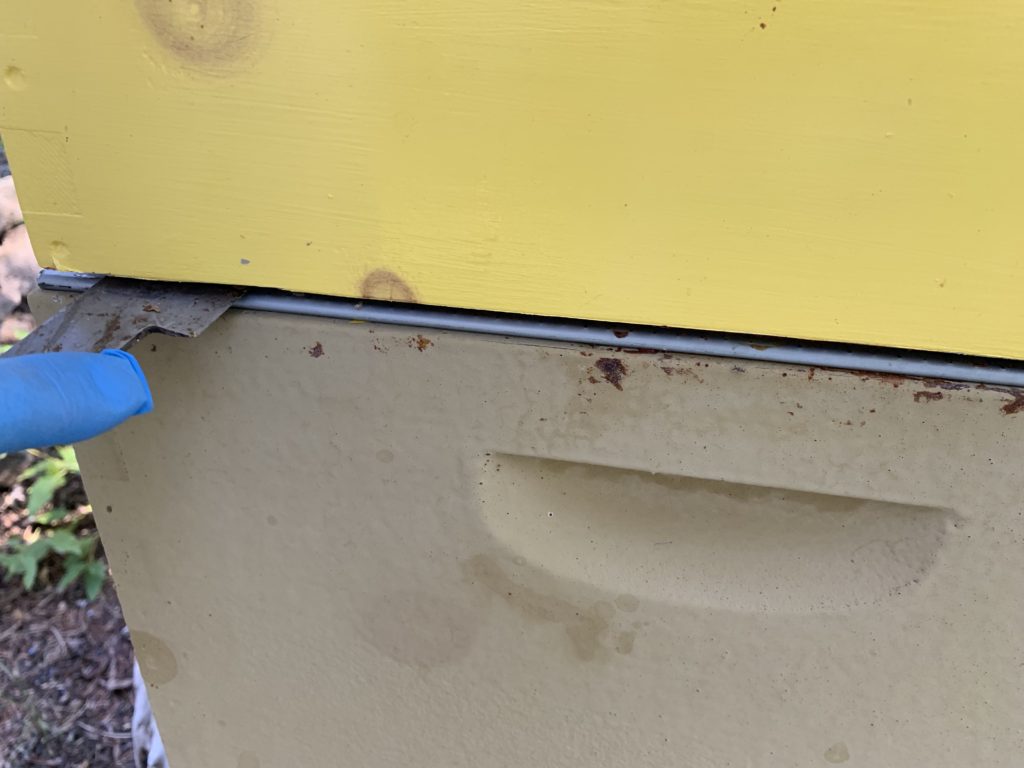



As every beekeeper knows, we’re not in control of the bees. They only occasionally allow us to think that we are. But as the above pictures show, the bees control the hive and they’re going to do whatever they have to do to be comfortable, including building cross comb. So, they get the honey for the winter. I’ll store the candy board for next year in the event they want it. Or, I may add them in the Spring for additional food support when nothing is really blooming yet.
[wordads]
The last picture I’m including below shows a feeding station my husband set up next to an empty hive to keep the yellowjackets and robbers from other apiaries from stealing the honey stores from the hive. Of course, our own bees likely make up the bulk of those feeding, but we still prefer to feed sugar solution (bee crack as my husband calls it) in a different location from the main hive.

This time of year nectar and pollen are at a minimum so the bees get a little nutty. That’s another reason we feed sugar solution somewhere else. Although we smoke the hive to calm everyone down before opening the hive, they’re still desperate for food and they go a little crazy with the sugar solution.
We’re going to wrap the hive this year to see if that will help in their survival. We’ve only had one year where our bees survived the winter. We adopted a natural approach after the first year and stopped using mite treatments, but we’re not convinced that was the problem.
[wordads]
This year, we’re going to use oxalic acid as a mite treatment which is supposed to be safe for bees. It’s best applied in late fall/early winter when the Queen isn’t laying brood because it won’t treat any mites inside a closed cell. Spring applications are fine, but apparently not as effective. We’ll use the syringe (dripper) method and add 5 cc’s worth of oxalic acid/sugar solution to each area between the frames of both brood boxes. Better Bee has good information on oxalic acid and the dribble method here.
So, I guess that’s it. I may post again when we do the oxalic treatment, probably toward the end of the month, at least what happened, if not pictures as well. As temperatures drop, we have to work quickly so there may not be an opportunity to take pictures.
Until next time…
Blessed Bee!
If anyone intends to either quote something I've written, or intends to post any part of my work, including my videos, on any other site, please ask permission before doing so. Any reposting of my work without permission can be considered as copyright infringement, so please ask. And if I give permission, you MUST clearly reference my name as author and my website. No exceptions. The words an author writes are sacred. Unapproved use is not.
Thank you... Jan Erickson

